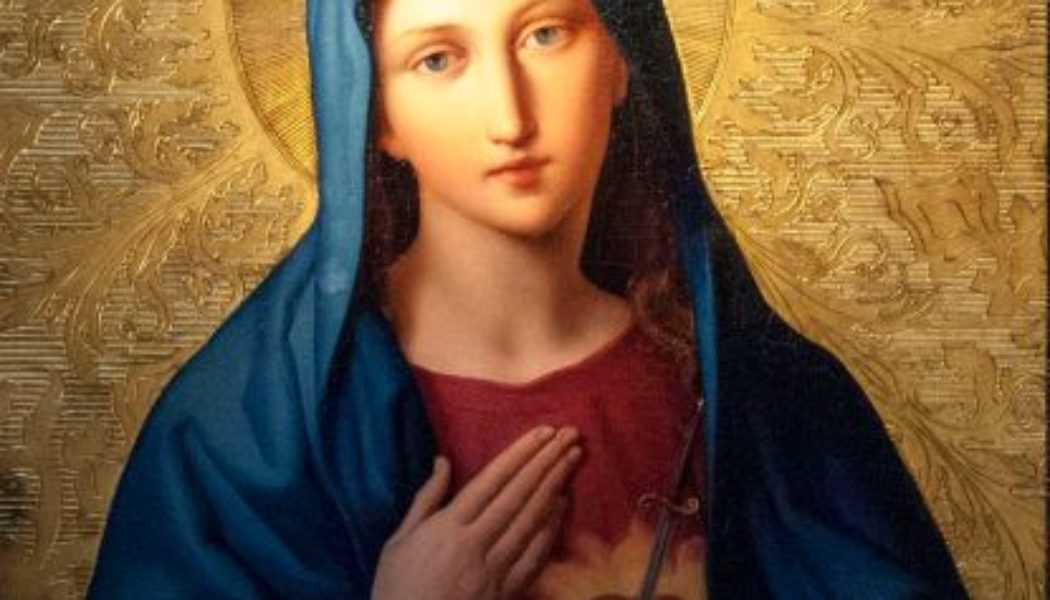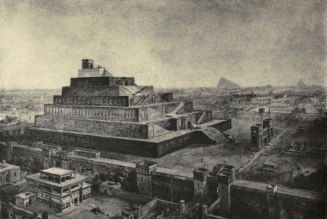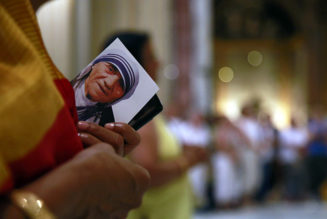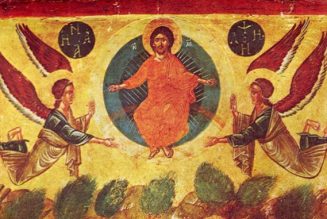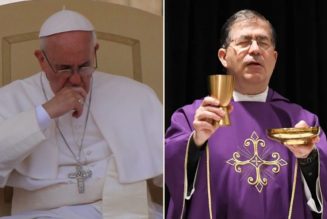I originally wrote this in October of 2019 but am posting this again in relation to the consecration of Russia and Ukraine to the Immaculate Heart of Mary on March 25, 2022. A consecration to the Immaculate Heart Mary entails seeking the Lord with her, sharing in her purity, suffering, and love, which are symbolized in the depictions of her Immaculate Heart as explained in this post. It asks for her special care and protection, saying “yes” with her at the Annunciation, the foot of the Cross, and at Pentecost.
The Church gives us moments to focus on elements of our faith and devotional practices so we can carry them with us throughout the rest of the year. As we wind down in October, it’s a good moment to focus on its connection to the rosary, which helps us to treasure and ponder things in our hearts with the Immaculate Heart of Mary (as Luke describes Mary in his Gospel).
October also marks the Miracle of the Sun on October 13, 1917, completing the monthly apparitions that began in May of that year. In the second secret, given in July, Mary pointed specifically to her heart, asking for Russia to be consecrated to her Immaculate Heart and promising that “in the end, my Immaculate Heart will triumph.” She also told us how to come close to her heart, asking the children repeatedly to pray the rosary, stating at the final apparition, “I am the Lady of the Rosary. Continue always to pray the Rosary every day.”

The devotion to Mary’s Immaculate Heart and to the rosary are intertwined, as Mary made clear during the apparition on July 13th in which she gave us a new prayer to add after the Glory Be: “O my Jesus, forgive us, save us from the fire of hell. Lead all souls to Heaven, especially those who are most in need.” This prayer came in response to the vision she gave the children of Hell, clearly affirming its reality and offering her Heart as a preventative.
You have seen Hell where the souls of poor sinners go. To save them, God wishes to establish in the world devotion to my Immaculate Heart. If what I say to you is done, many souls will be saved and there will be peace.
Some, particularly non-Catholics, might find devotion to Mary’s Heart odd, but let’s examine its key elements, visible in Kupelweiser’s painting above: flowers, sword, and fire. All three have clear biblical roots.

Flowers: The Angel Gabriel proclaims (announces) to Mary at the Annunciation that she is full of grace, the highly favored one chosen by God to be the human mother of the Word made flesh. Her purity comes from her complete dedication to God, as manifested in her perpetual virginity, which remained even through and after motherhood.
Paintings tend to depict Mary’s holiness and purity though a lily flower, which de Matteis uses almost as if to express Gabriel’s words to Mary. The imagery of the Immaculate Heart uses roses to express this purity, a flower connected to the rosary, of course, as each Ave echoes Gabriel and offers a rose for Mary’s crown. There is another biblical passage which unites the two flowers, as an expression of the bride’s love for the divine bridegroom: “I am a rose of Sharon, a lily of the valleys. As a lily among brambles, so is my love among maidens. ” (Song of Songs 2:1-2). Sharon is a coastal plain that begins at Mt. Carmel and stretches south to Tel Aviv.

Sword: The second major image of the Immaculate Heart comes from the sword piercing through it. This comes directly from Simeon’s prophecy at the Presentation in the Temple (also known as the Purification of Mary): “Behold, this child is set for the fall and rising of many in Israel, and for a sign that is spoken against, and a sword will pierce through your own soul also, that thoughts out of many hearts may be revealed.” The prophecy comes to fulfillment when Mary stands at the foot of the Cross (see the Stabat Mater).
It is another line from the Old Testament that Church uses to express this sword that opens Mary’s heart: “Look and see if there is any sorrow like my sorrow which was brought upon me” (Lamentations 1:12). Hers is the true lament for the sins of Jerusalem, the worst of which she witnesses. Bouguereau’s painting of the Pietà captures Mary’s pain and her gaze of love that opens the thoughts and secrets of our heart. The sword in her Immaculate Heart testifies that she shares in Jesus’ mission more than anyone, taking up the Cross to suffer with her Son.

Fire: Fire relates to prayer, symbolizing the Holy Spirit’s presence and His giving of divine life. After Jesus’s ascension, the disciples gather with Mary to pray, offering the new worship of Spirit and truth: “All these with one accord devoted themselves to prayer, together with the women and Mary the mother of Jesus, and with his brethren” (Acts 1:14). The tongues of fire given at Pentecost represent the presence of God in His new Temple. As the Spirit descends, we see Mary’s receptive posture pointing upwards in El Greco’s depiction as well as her central role as the mother of the disciples.
Fire often marks God’s presence in the Old Testament: the torch that appears to Abraham, the Pillar of Fire in the Exodus, the fire that consumes sacrifice, as at the dedication of the Temple (2 Chronicles 7:1). Mary, the spouse of the Holy Ghost, completely filled the Spirit, shows us what it means to be a Temple of God. Mary burns with the holy zeal of God’s love and the fire in her heart marks God’s presence there.
The symbolism of Mary’s Immaculate Heart teaches us how the Bible presents Mary: full of grace, suffering with her Son, and enlivened by the Spirit. The images also can help our mediation during the rosary, showing us how to connect to Mary’s heart. Mary is the model disciple: conformed to Christ in the Holy Spirit. The time we spend with her during the rosary should give us confidence. Our Lady of the Rosary is also known as Our Lady of Victory (the original name of the feast), reminding us that when we pray the rosary we unite ourselves to her heart, which she assured us will triumph.
Join Our Telegram Group : Salvation & Prosperity
